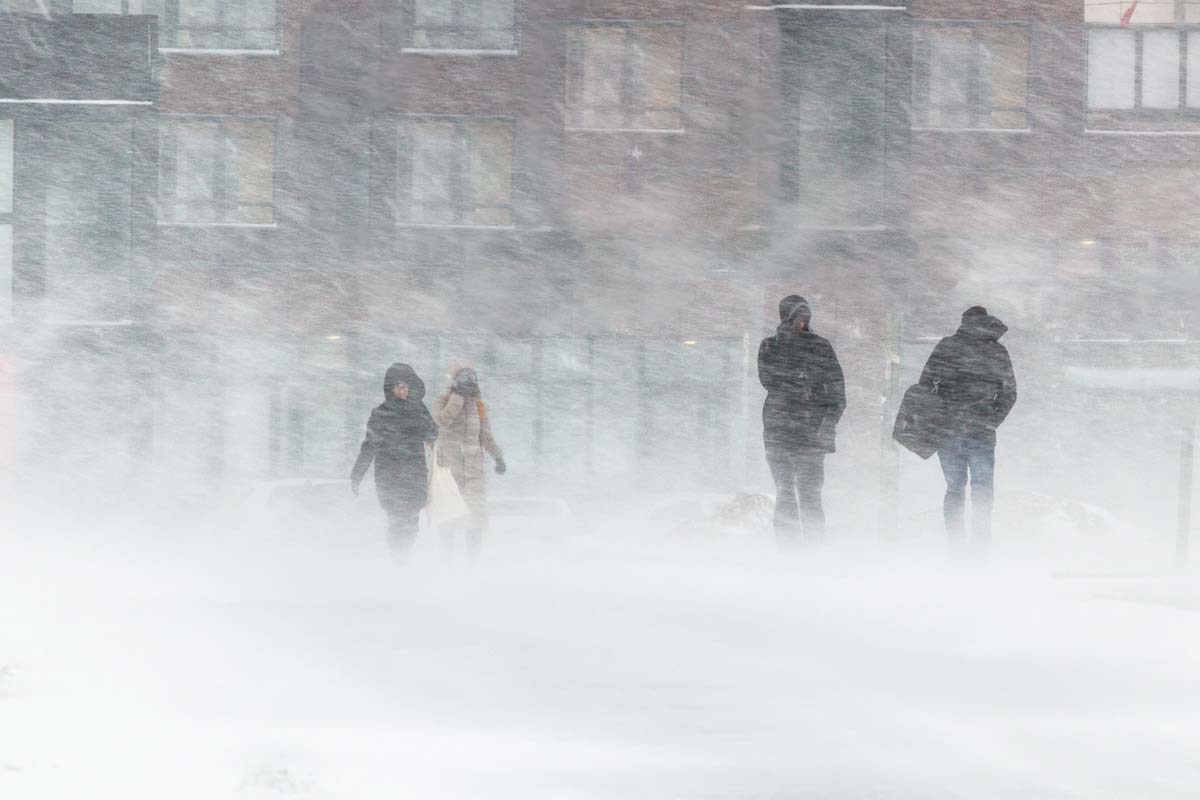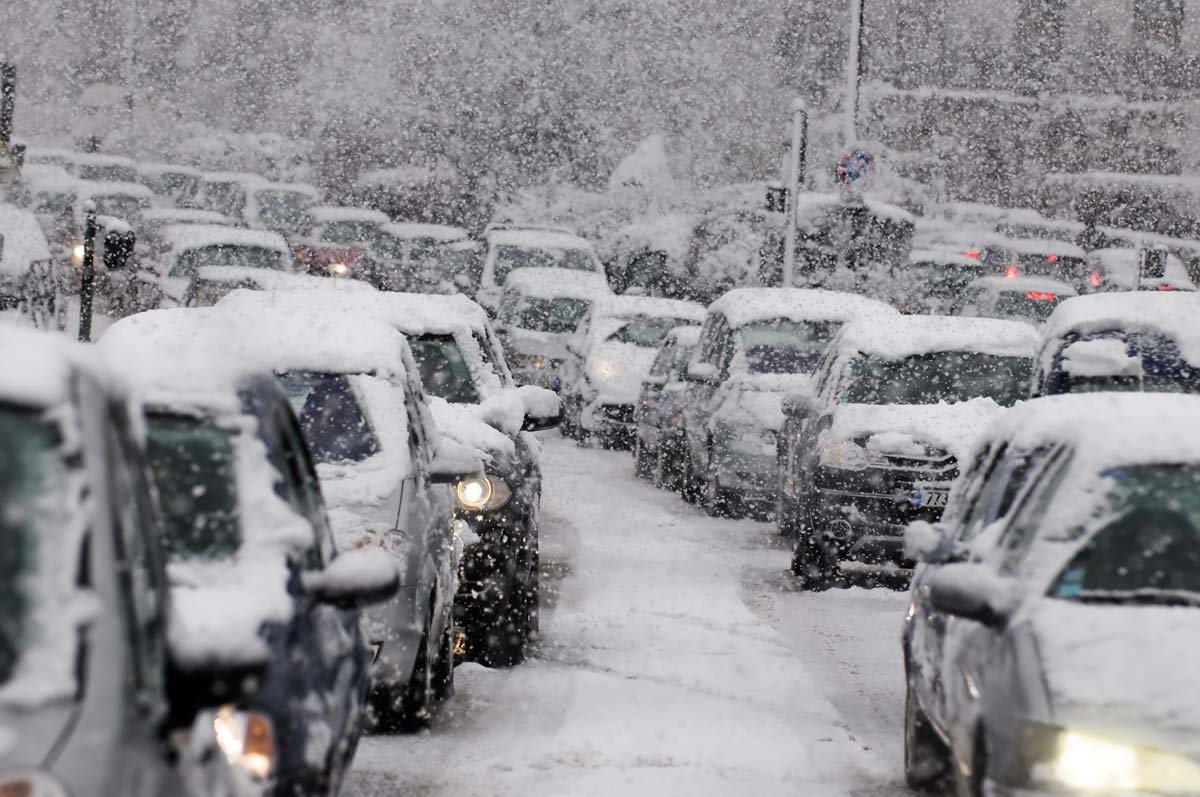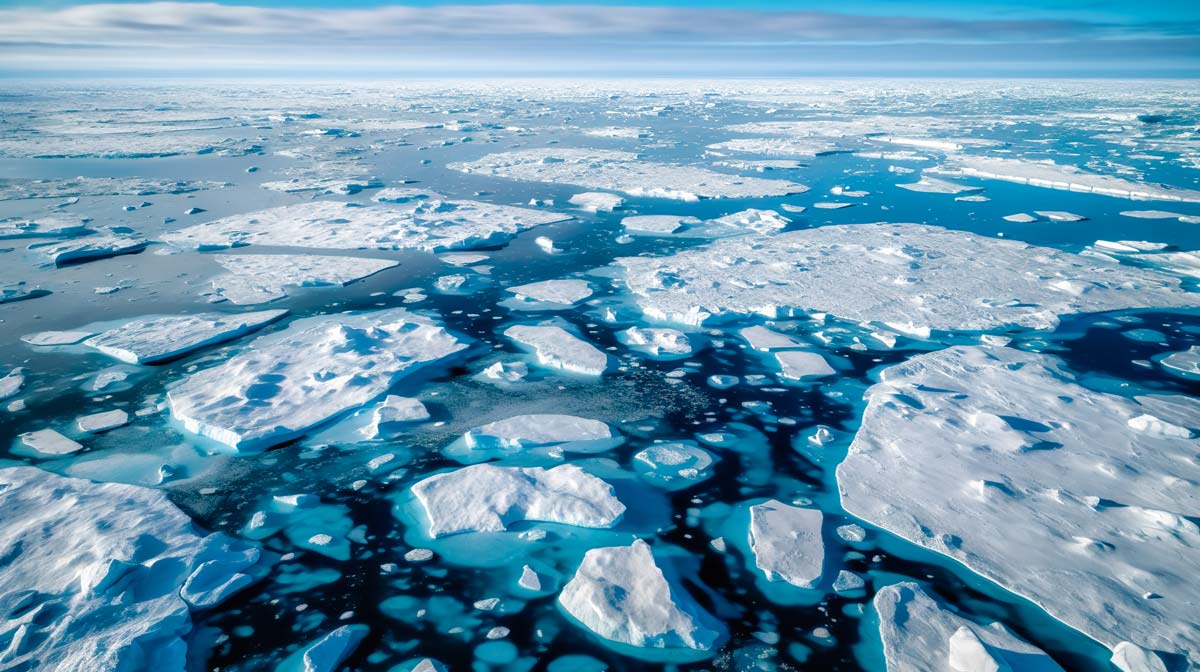
In the film “Tomorrow,” the world is plunged into an icy catastrophe caused by the repercussions of global warming, as melting ice caps and disrupted ocean currents unleash havoc on Earth. What once seemed like a fictional scenario is now becoming an alarming reality.
Europe, which experienced an unusually warm winter last year, is currently facing an onslaught of heavy snowfall and freezing temperatures right from the beginning of winter. Even regions in southern France, Rome, and Italy, where snow is a rare occurrence, are now grappling with severe snowstorms. Record-breaking snowfall across various parts of Europe has led to widespread disruptions, with flights and trains being canceled, temporarily crippling the entire transportation network in the region.
In an unprecedented event, Siberia recorded an extreme cold of -58°C [-72.4°F] in early December. On December 3, Moscow, the capital, witnessed over 15 cm [6 in] of snowfall within just 12 hours, marking the highest amount in 145 years of Russian meteorological observations.

Munich in southern Germany recorded 44 cm [17 in] of snowfall, the most since 2006. Romania experienced power outages in over 400 areas due to heavy snowfall, and Bulgaria suffered power outages in more than 1,000 villages due to snowstorms. Icy roads led to traffic accidents, prompting the Prime Minister to declare a state of emergency. Scandinavian countries, including Sweden, Norway, and Finland, recorded temperatures as low as -15°C [-5°F]. In the northwest of England, more than 30 cm [12 in] of snow paralyzed transportation, leaving 13,000 people without power, enduring the harsh grip of the extreme cold.
France, Norway, Denmark, the Netherlands, Belgium, Italy, and some regions of Spain are expected to endure the effects of a cold spell, with continuous snowfall anticipated throughout December. Meteorologist Nahal Belgherze from France has warned that this winter in Europe is expected to witness the heaviest snowfall since 2010.
Winter Cold Snap: The Role of Arctic Oscillation

While global concern focuses on global warming, what causes unexpected cold snaps during winter? The culprit behind the cold extremes in the Northern Hemisphere is the Arctic Oscillation. The Arctic Oscillation occurs approximately every 10 years when the jet stream surrounding the Arctic shifts, allowing cold air from the Arctic to move southward. The jet stream, situated between the high-latitude and low-latitude regions of the Northern Hemisphere, acts as a barrier, preventing the cold Arctic air from descending into lower latitudes. However, when the jet stream that surrounds the cold air weakens, the Arctic’s cold air flows out, causing temperatures to rise in the Arctic and leading to abnormal cold events at lower latitudes, such as cold snap.
The weakening of the jet stream is linked to global warming. Due to global warming, the melting of sea ice disrupts the heat balance of the Arctic, increasing the expanse of open water and reducing reflectivity, causing more heat absorption. As the Arctic temperature rises, the temperature difference between the Arctic and mid-latitudes decreases, weakening the jet stream that encircles the cold air in the Arctic. As a result, when the jet stream weakens, the cold air from the Arctic descends below middle latitude, causing severe winter cold snaps in the Northern Hemisphere.
The historic winter storm in Texas, 2021, causing unprecedented cold temperatures and massive power outages, can be attributed to this phenomenon.
Super El Niño That Warms the Earth

The Northern Hemisphere is grappling with heavy snowfall and extreme cold, while the Southern Hemisphere is plagued by scorching heatwaves and intense rainfall. The particularly erratic weather in the latter half of this year is presumed to be a result of the combination of global warming and the occurrence of El Niño.
El Niño is a phenomenon where the sea surface temperatures in the monitoring area known as the El Niño/La Niña Watch Zone, located on the equator in the eastern Pacific Ocean, rise higher than usual, accelerating global warming. El Niño is a natural phenomenon driven by the Earth’s energy balance, but its impact has been amplified by global warming, resulting in abnormal climate patterns.
This year, a super El Niño is anticipated, raising concerns about a new level of worldwide economic threats. Historically, El Niño has elevated global temperatures, caused precipitation in certain regions of South America, and contributed to droughts in Africa, resulting in widespread disruptions to the world economy. This has far-reaching consequences for health, food security, water management, and the environment.
The World Meteorological Organization [WMO] predicts that, with the accumulation of greenhouse gases and the recurrence of El Niño, the next five years, starting this year, have a 98% probability of becoming the hottest on record. This anticipation suggests that global temperatures are likely to enter uncharted territory. Dallas Federal Reserve Bank in the United States, mentioned, “There is a possibility that GDP and people’s income will permanently decline due to a long-term global warming and El Niño.”
The WMO reports that the Earth’s average temperature is currently 1.43°C [34°F] higher than pre-industrial levels, reaching the highest in recorded history. Antarctic sea ice is also maintaining its lowest levels. The WMO anticipates that the global warming and El Niño climate pattern will persist until at least April 2024, leading to further temperature spikes.
“This will have far-reaching repercussions for health, food security, water management and the environment. We need to be prepared,” said Petteri Taalas, Secretary-General of the WMO, in a statement in May.
Amidst the global struggle with abnormal climate patterns, the ongoing development of El Niño raises concerns that 2024 may witness even more severe instances of erratic weather than this year. Harsh winter in Europe and Australia’s heat island phenomenon are both examples of climate anomalies attributed to global warming. November was recorded as the warmest in history, and future projections indicate a further rise in global temperatures. This suggests that the international community may face more intense economic crises, international conflicts, pandemics, and food security issues in the future.
As humanity confronts an unprecedented crisis, if we aspire to a developed future rather than catastrophe, we must collectively focus our efforts on resolving the climate crisis. While it is certainly not an easy task, it is imperative for all of us to come together and take action for the sake of our future.